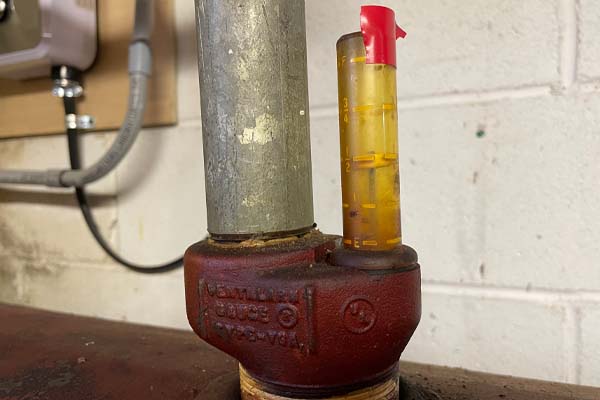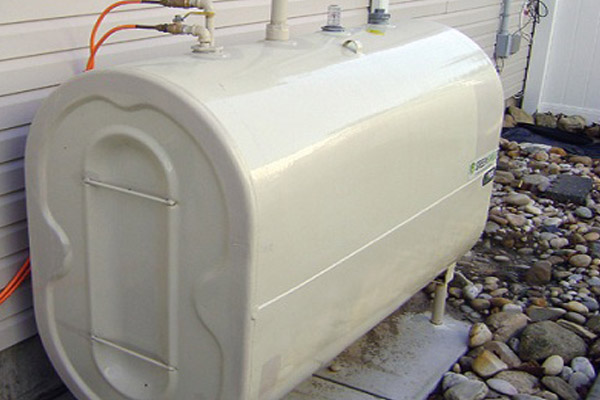Contents

Homes equipped with heating oil systems are always winter-ready. These systems have their own fuel tank, so they aren’t dependent on a continuous supply from outside sources. They aren’t vulnerable to interruptions in supply like homes that utilize natural gas. Still, homeowners must ensure they have the right-sized tank to meet their heating requirements. Those who use will-call oil deliveries should also make it a habit to check their oil tanks to see how much fuel they have left by reading the heating oil tank gauge. This allows them to schedule heating oil deliveries on time.
The Basics of Float Gauges in an Oil Tank
The oil tank design has seen few changes in the past century. It has a simple design that works. It consists of the main tank body, usually a welded steel container with rounded edges. It also has a fill pipe wherein more oil can be added and a vent pipe where excess air is released. Underneath the vent pipe is the vent alarm or whistle, which emits a sound when air escapes. Tanks also have oil feed lines where the oil passes through from the tank to the burner. It also has a float gauge wherein a hinged arm is attached underneath as the end floats to the oil surface. The arm gets lower as oil is used up, taking the gauge indicator disc with it.
Finding the Oil Tank on the Property

Find the oil tank on the property if you recently bought a home. This way, you can read the oil tank gauge. This may be an easy task at times if the tank is above the ground. However, the tank may also be hidden in the basement, or the home has an underground oil tank. Still, you should be able to access the external pipes and float gauge. Tanks are enormous containers with a 275-gallon standard size. They aren’t completely filled for safety and usually only contain around 225 to 250 gallons of heating oil. The remaining tank space is left for air so the heating oil can expand without problems.
Reading the Oil Tank Float Gauge
Once you find the oil tank, look at the gauge on top. You should see a transparent cylindrical device with an indicator disc. The typical labels it has are F (Full), 3/4, 1/2, 1/4, and E (Empty). Look where the disc is to determine the level of heating oil in your tank. It may be confusing to those who encounter this for the first time. They may need clarification on whether they should follow the bottom or top of the disc when reading the gauge. Truthfully, it doesn’t matter, as the gauge isn’t a precise contraption. Check where the middle of the disc is with respect to the markings to have an idea of the oil level.
Calculating the Remaining Fuel In Your Heating Oil Tank

Once you have an estimated level of fuel in your tank, you must compute how many gallons of heating oil are left. Homeowners will have to manually conduct this step using a simple formula. Start by checking the tank’s size to know its fuel capacity. For instance, many homes have a 275-gallon tank. As it can’t be filled to the brim, it typically only has 240 gallons of heating oil, with the rest taken up by air. Thus, a float gauge pointing to 1/4 has around 60 gallons left (240 x 0.25). This can last a few weeks, but it is still best to call for delivery immediately instead of waiting for the tank to run out of oil. A general rule is to book a heating oil delivery once your tank is around 30% full.
Inspecting for Oil Tank Gauge Failure
The float gauge can only provide an approximation of the current heating fuel level. At times, it may fail to provide you with a good estimate because the float mechanism has failed. One method to check if this is the case is to remove the outer case and push the float down. When you let it go, the float should come back by itself. If it doesn’t, you may have a broken float that requires professional attention. This issue can occur because of wear and tear in older tanks. Another cause is that the arm below might have rotated and gotten stuck against the side of the tank. The float may also be covered in thick sludge, weighing it down and making it unable to work correctly.
Overcoming a Broken Oil Tank Gauge
 If you have a broken gauge, you can utilize alternative ways to measure the fuel level. This also applies to tanks without float gauges at the onset. To measure it manually, you need a long, thin stick that can fit inside the hole. Its length should also be enough to cover the tank’s height. After you get a refill, do the following:
If you have a broken gauge, you can utilize alternative ways to measure the fuel level. This also applies to tanks without float gauges at the onset. To measure it manually, you need a long, thin stick that can fit inside the hole. Its length should also be enough to cover the tank’s height. After you get a refill, do the following:
- Dip the stick to determine where the top of the fuel is when the tank is full.
- Place a mark on it.
- Use this same stick to determine how far the fuel level is later.
Typical Duration of a Heating Oil Tank
In general, a full heating oil tank will last for some time. Exactly how long depends on factors like:
- Tank size
- Home size
- Heating system efficiency
- Interior temperature settings
- Regional climate
- Level of insulation
- Frequency of use
Most homes use heating oil to warm certain rooms, while others require whole-house heating. Homeowners can monitor their yearly fuel consumption to grasp their annual heating oil requirements.
Conclusion
The winters in Connecticut can be harsh. Ensure that your home doesn’t run low on heating oil during this time. Check the float gauge to determine the heating oil level left in your tank and order a refill as soon as it plunges below 1/3 of its capacity. This way, you are assured of continuous heating, so you can enjoy staying in a warm and comfortable home.
Call Wilcox Energy For Reliable Heating Oil Deliveries & HVAC Services

For top-notch service and competitive prices on heating oil deliveries and HVAC services, contact Wilcox Energy as soon as possible.
We offer a broad range of fuel delivery plans and financing options, which allow you to customize your oil deliveries to meet your specific needs. We also deliver Bioheat® heating oil, a blend of ultra-low sulfur heating oil and biodiesel. This liquid renewable fuel makes your home more eco-friendly and your heating system more efficient. It comes to you without any added cost. In addition, we perform heating system repairs and maintenance for the purpose of enhancing the overall efficiency and functionality of all your home heating equipment. Contact Wilcox Energy for all of your residential heating needs. Click the link to view our service area.
For more information about our heating oil deliveries or HVAC services, be sure to contact Wilcox Energy. You can click here to contact us or call us at (860) 399-6218. Call now!
